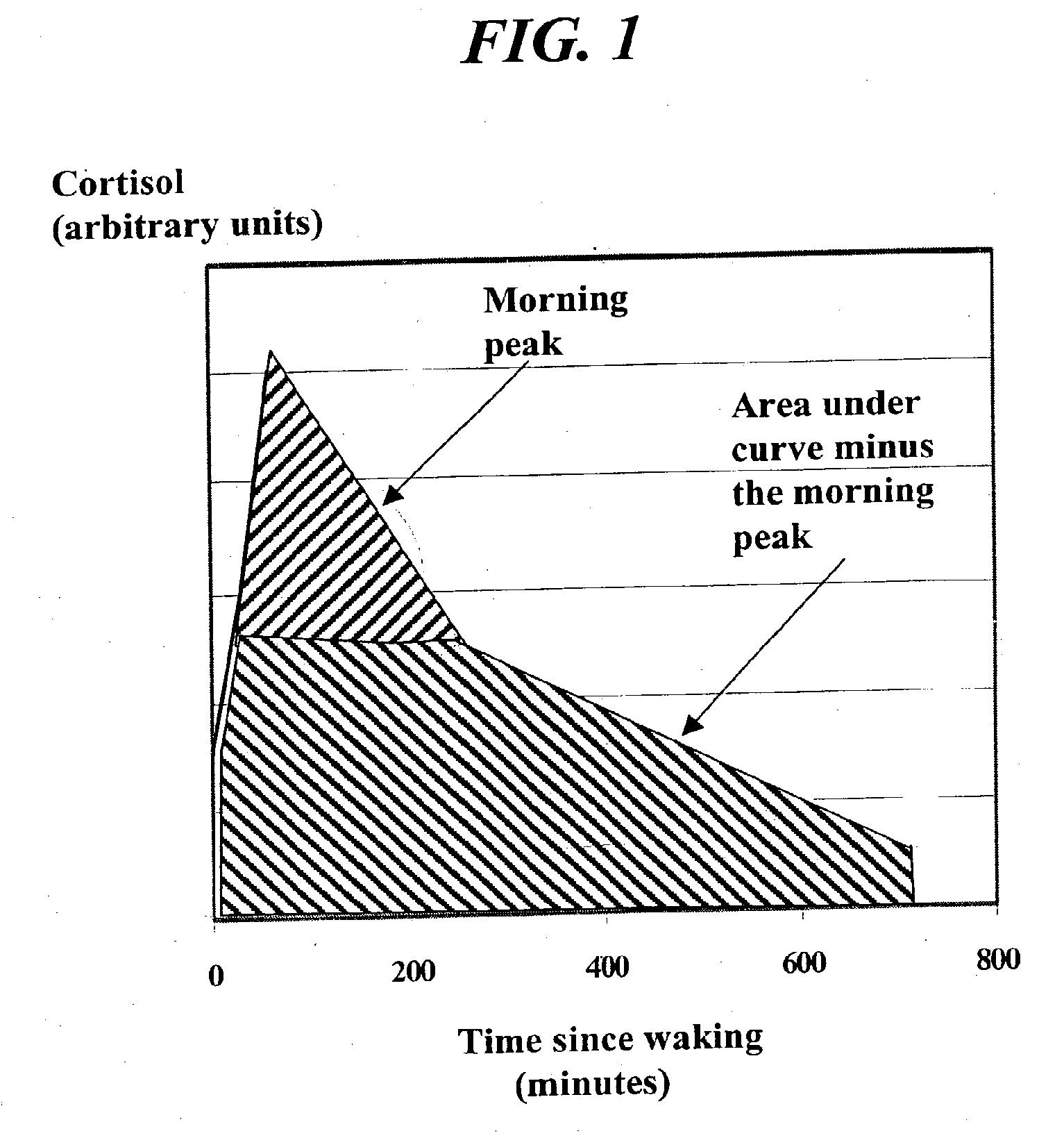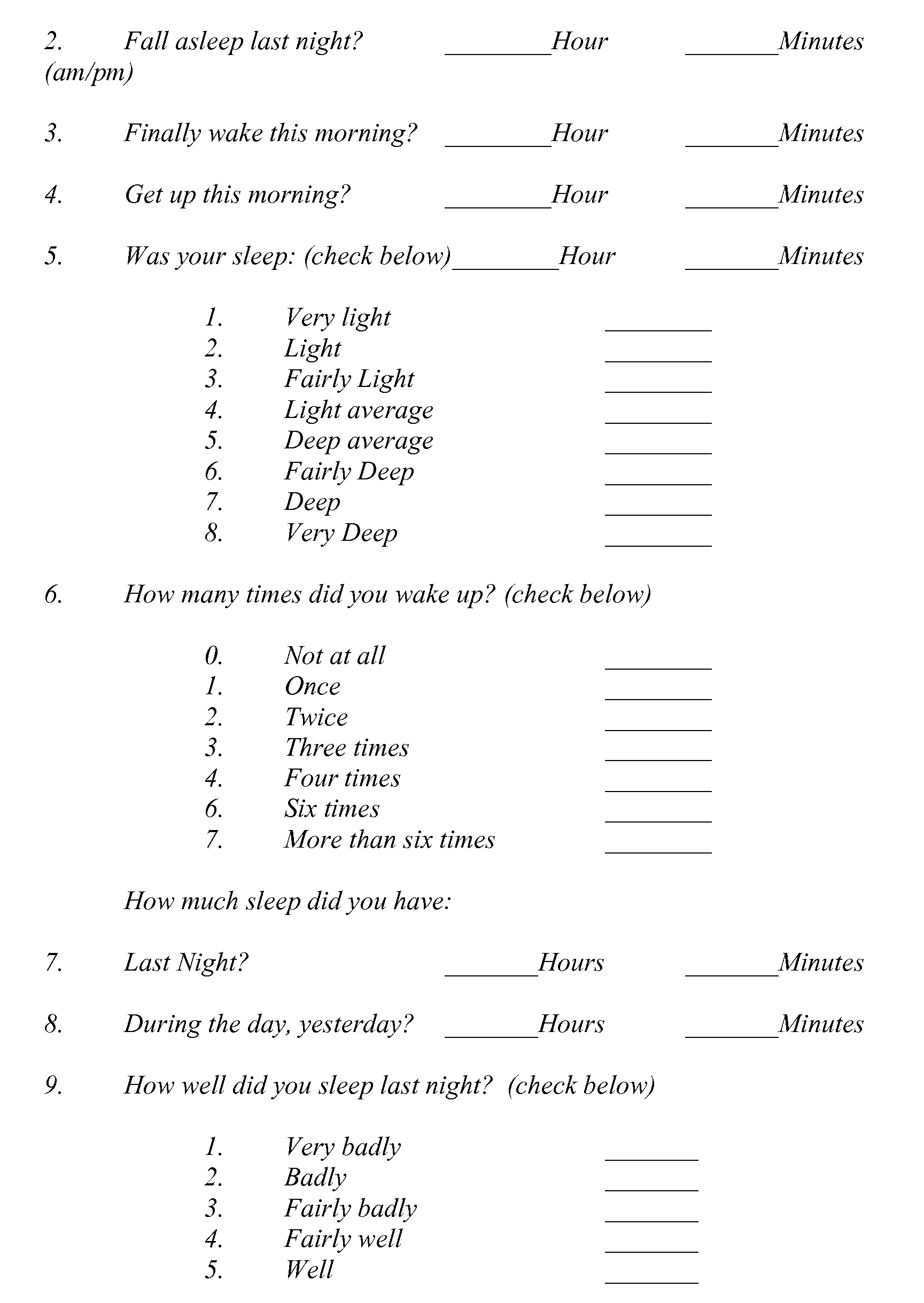Method of affecting sleep and sleep-related behaviors
a technology applied in the direction of drug compositions, peptide/protein ingredients, diagnostic recording/measuring, etc., can solve the problems of providing short-term improvement of sleep and sleep-related behaviors, and none is sufficient to reduce the basal activity of the hypothalamus, so as to reduce the basal activity of the hpa axis
- Summary
- Abstract
- Description
- Claims
- Application Information
AI Technical Summary
Benefits of technology
Problems solved by technology
Method used
Image
Examples
examples 1-3
[0058] Three groups of women (Groups A-C) participated in a study in which mood and sleep behavior self-assessments were made and saliva samples were collected at set time points throughout the day for the purpose of measuring cortisol.
[0059] In Example 1, Group A was exposed to a one time relaxing fragrance experience at a set point in the morning.
[0060] In Example 2, Group B was exposed to the same fragrance experience as in Group A but with multiple exposures through the day, including one prior to the onset of sleep.
[0061] In Example 3, Group C was exposed to the same fragrance as Groups A & B but was also exposed to relaxing music during the same period. Group C had multiple exposures to the music and fragrance at set time points throughout the day. At a set time prior to the anticipated onset of sleep, panelists in Group C bathed in a warm (about 33-37° C.) tub with the same fragrance as experienced throughout the day, with music and low ambient lighting.
[0062] The fragran...
example 1
One Time Exposure to Fragrance (Group A)
[0063] A group of women aged 20-40 years and in good health (Group A) participated in an ambulatory study in their natural environment in which they were asked to collect approximately 1 ml of saliva by drooling or spitting into independent vials at set points throughout each day of the study for the purpose of measuring cortisol concentrations. These saliva samples were collected: [0064] i) upon waking [0065] ii) 30 minutes post waking [0066] iii) 65 minutes post waking [0067] iv) 4 hours post waking [0068] v) 8 hours post waking [0069] vi) 12 hours post waking
[0070] The group of women was also asked to complete self-assessments of their mood and behavior. The study lasted for 5 days. Day 1 of the study served as the control day in which saliva samples were collected and questionnaires completed but no treatment regimen had been prescribed. On Day 2 of the study, the panelists were asked to smell a pleasant relaxing fragrance for a period o...
example 2
Multiple Exposures to Pleasant Relaxing Fragrance and Ambient Lighting (Group B)
[0075] A group of women aged 20-40 years and in good health (Group B) participated in an ambulatory study in their natural environment in which they were asked to collect approximately 1 ml of saliva by drooling or spitting into independent vials at set points throughout each day of the study for the purpose of measuring cortisol concentrations. These saliva samples were collected: [0076] i) upon waking [0077] ii) 30 minutes post waking [0078] iii) 65 minutes post waking [0079] iv) 4 hours post waking [0080] v) 8 hours post waking [0081] vi) 12 hours post waking
[0082] They were also asked to complete self-assessments of their mood and sleep behavior. The study lasted for 5 days. Day 1 of the study served as the control day in which saliva samples were collected and questionnaires completed but no treatment regimen had been prescribed. On days 2-5 of the study, the panelists were asked to smell a pleasa...
PUM
| Property | Measurement | Unit |
|---|---|---|
| Fraction | aaaaa | aaaaa |
| Fraction | aaaaa | aaaaa |
| Fraction | aaaaa | aaaaa |
Abstract
Description
Claims
Application Information
 Login to View More
Login to View More - R&D
- Intellectual Property
- Life Sciences
- Materials
- Tech Scout
- Unparalleled Data Quality
- Higher Quality Content
- 60% Fewer Hallucinations
Browse by: Latest US Patents, China's latest patents, Technical Efficacy Thesaurus, Application Domain, Technology Topic, Popular Technical Reports.
© 2025 PatSnap. All rights reserved.Legal|Privacy policy|Modern Slavery Act Transparency Statement|Sitemap|About US| Contact US: help@patsnap.com



